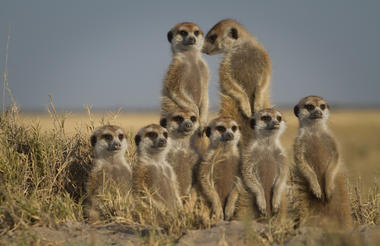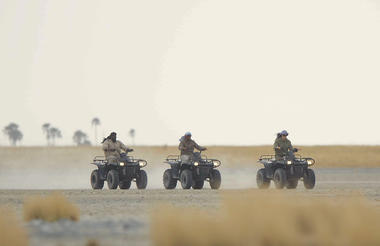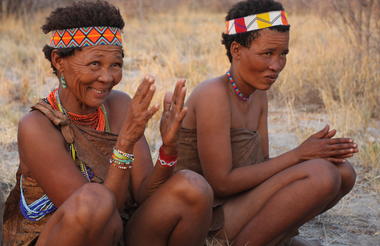Zambezi National Park is a National Park located upstream, just 5km from Victoria Falls on the Zambezi River in Zimbabwe and comprises 40km of Zambezi River frontage. It was split off from Victoria Falls National Park in 1979 and is 56,000 hectares (140,000 acres) in size. The park is bisected by a road to Kazungula, dividing it into a riverine side and a Chamabondo Vlei side. Most of the park is within the ecoregion of Zambezian and Mopane woodlands, while a small portion in the south is within the Zambezian Baikiaea woodlands.
The Zambezi National Park plays host to a wide variety of larger mammals including African elephant, lion, Cape buffalo and leopard. In addition to these charismatic members of the "big 5" there are herds of sable antelope, common eland, common zebra, Southern giraffe, greater kudu, waterbuck and impala. In addition, many species of smaller wildlife can be seen here.
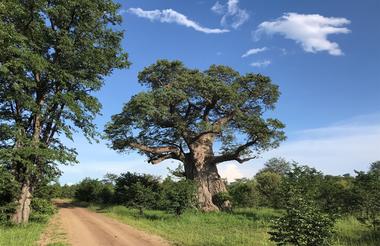
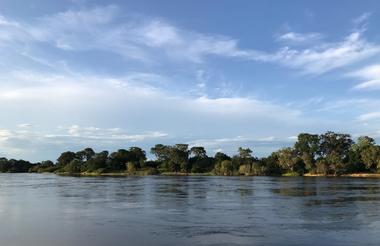
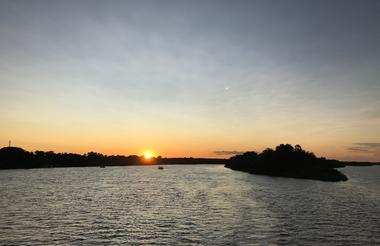
The Chobe Riverfront is an elephant mecca; home to the largest density of African elephants in the world. Travel here during winter and you’ll fast run out of fingers and toes while you count them drinking at the riverbanks and socialising out on the floodplains.
Thanks to its ease of access from Victoria Falls, the Chobe Riverfront is the busiest part of Botswana (though still a much quieter affair than most South or East African safaris). What Chobe lacks in solitude during the busier months, it more than makes up for with quality game viewing.
Chobe will leave you feeling tiny as giant elephant bulls stroll up next to your vehicle or snorkel alongside your boat. It will make you feel lost as hundreds of hippos and buffaloes crowd you out on the floodplains. It will put your heart in your throat as prides of lions stalk antelopes by the water’s edge, and it will leave you alone with your thoughts while the classic red sunsets melt over the river to a soundtrack of whistling fish eagles.
Chobe is not just a great introduction to Botswana. It also makes a rewarding repeat journey once you’ve ticked off the big stuff. It’s a place to search for the rare sable antelope, to spot that gem from the birders’ bucket list and to explore the remoter corners.
Where you stay in Chobe makes a huge difference to your safari experience. The most affordable options are at bigger hotels in a town setting where you’ll share your game drives with a few more vehicles. On the more exclusive end, stay in a wilder area in or around the park, listen to the sounds of the bush at night and get a head start on accessing the park for activities.
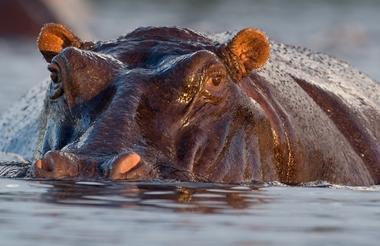
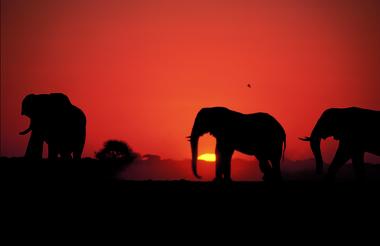
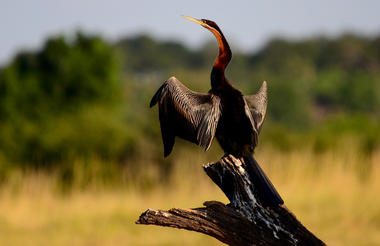
The Linyanti is a safari addict’s bush nirvana. One of the most remote and exclusive pockets of Botswana, this pristine wilderness is what great game viewing and wildlife documentaries are made of.
Only private concessions are on offer here, where the rules are flexible and the crowds can’t go. The Linyanti is not just for ticking off the big game; it also has a knack for delivering lesser-spotted bucket list items, whether it’s a rare bush pig or that long-searched-for wild dog.
Very few camps operate in the Linyanti. Each offers different habitats and landscapes with one common theme: a strong track record for game viewing during Botswana’s drier winter months. Together with the Chobe Riverfront, the Linyanti homes the highest density of African elephants in the world. Many camps also offer seasonally dependent water-based experiences, be it on a spillway, river, lagoon or channel to break up the game drive routine.
Just one of the Linyanti’s concessions alone is twenty times the size of Manhattan, yet only forty people can stay during any night of the year. If Botswana puts a heavy emphasis on preserving the wild and taking only a handful of people into the bush, then the Linyanti is where this concept is taken to the extreme.
Here, you can follow the big game off-road, whether in a white-knuckled pursuit of a lioness chasing buffaloes, or during a quiet crawl off-track to see wild dog puppies emerging from their den for the first time.
Possibilities exist for exploring the bush on foot for adrenaline-pumping game approaches, and many camps offer game viewing hides for a more relaxed approach to wildlife sightings, or even overnight sleep outs.
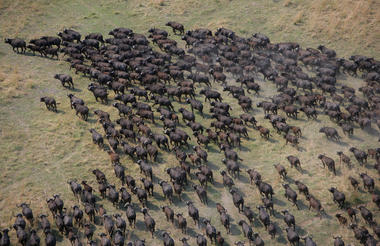
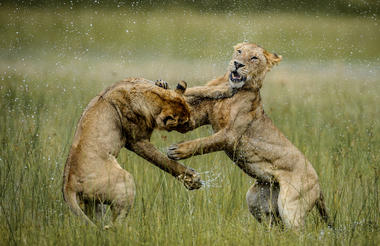
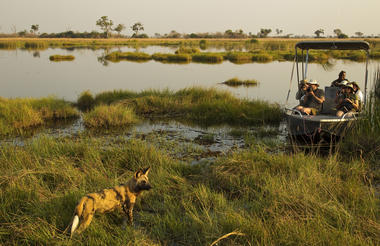
The Okavango Delta is where the wild things are: an immense, waterlogged oasis alive with elephants and birdlife, adrift in the middle of Kalahari sands. The real magic of the Delta lies in its water, trickling through from far away highlands, and spreading across the channels and floodplains.
During winter in the Kalahari, when the sun has baked the earth bare and turned the desert its driest, water fills the Okavango; transforming the floodplains into a Noah’s Ark of African wildlife.
As the water brings life to the delta, its local residents shape and recreate it. Termites slowly build mounds into islands, germinated with palm trees by passing elephants. Waterways open and close on the whim of wide-bottomed hippos, carving out channels where they crash through reeds, and leaving room behind them for exploration by mokoro.
The Okavango has many faces, which change throughout the year, prompted by that most unpredictable diva of all: the weather. Water levels rise and drop, expanding and shrinking islands, while animals move where the life is easiest and the grass greenest. In a few days, a sandy road driven by vehicle can become a waterway of unknowable depth, prompting a safari by boat instead.
Where and when you stay in the Okavango Delta will hugely influence what you do in the bush each day, the animals you’re most likely to see and finally, the safari experience you’ll have.
The delta’s watery heart is best discovered by mokoro through shallow channels and floodplains, as well as crossing the islands on foot. For less water and more of the big game, visit a camp on its drier edges (including Moremi Game Reserve and the Khwai Community Area), jump on a vehicle and seek out the animals hiding in the woodlands.
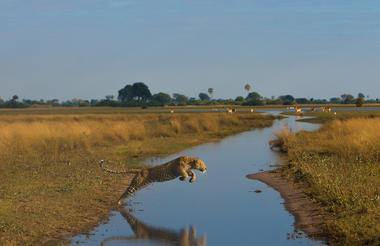
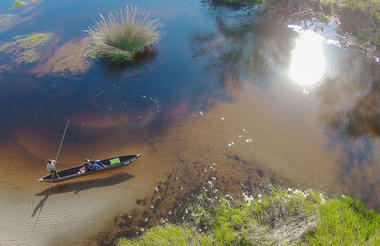
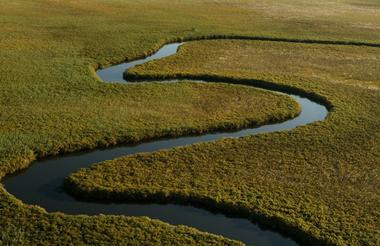
The Makgadikgadi Salt Pans are all that remains of a great lake which once covered most of northern Botswana, fed by rivers carrying salts. The most iconic pans, Ntwetwe and Sua Pan provide vistas of blinding white salt flats reaching far into the horizon where pans sleep-outs are experienced. No vegetation grows on the salty surface of the pans, but the fringes are covered with grasslands. No animals live on the pans, save a few populations of desert species and the elusive brown hyena living near the fringes. The result is that the salt pans provide an unforgettable landscape experience of incredible sunsets and sunrises and a bewildering lack of perspective rather than a game experience. Africa’s famous explorer Dr. David Livingstone crossed these pans in the 19th century, using two massive baobabs, believed to be 3,000 to 4,000 years old as a navigation tool.
All camps on the salt pans are situated on or next to Ntwetwe Pan in the west of the pans complex and offer quad biking on the pans, visits to habituated meerkats, archaeological walks as well as cultural insight into the lives of the San people. More recently horse-riding expeditions have been made possible, providing a unique way to explore the landscape. All activities in this area are subject to favourable conditions as the slightest rainfall can make the pans completely inaccessible. During the rainy season, the main attraction of these camps is the zebra and wildebeest migration passing through during the early months of the year with other activities during this season being very limited. During years of good rains, the pans can be transformed into a powder blue lake with waters gently lapping the shorelines – a clear indication of the gigantic lake the Makgadikgadi once was. The floods attract flamingos with numbers running into the tens or even hundreds of thousands but the spectacle is fleeting and difficult to catch. Camps located on and next to the pans are Camp Kalahari, Jacks Camp and the seasonal San Camp, operating only during dry season. Accommodations in Gweta also access this part of the pans, running overnight trips to the area.
Sua Pan is the eastern-most of the large pans and is separated from Ntwetwe Pan by a thin strip of grass. One of the most striking destinations in this area is Kubu island, a rocky outcrop near the south-western edge of Sua Pan accessible only by quad bike expeditions of several days from Camp Kalahari, Jack’s Camp and San Camp or by self-drivers. This crescent-shaped island is about one kilometer long and apart from its eerie isolation and breathtaking beauty, Kubu is rich in archaeological and historical remains. Stone age tools and arrowheads can still be found today along the shorelines of this tiny island and a circular stone wall and stone cairns suggest that Kubu may have been part of the outer-reaches of the Great Zimbabwe Empire that was based at Masvingo, in modern-day Zimbabwe.
